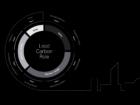A recent SOM-authored white paper published by BuildingMinds, “Values-Driven Design: How Architects and the Real Estate Industry Can Achieve Shared Goals for Environmental and Social Good (ESG),” explores how ESG principles can redefine the built environment by integrating sustainability, equity, and resilience into real estate design and operations. Within the white paper appears the following case study—a closer look at our master plan for the Charenton-Bercy Development.

Case Study: Charenton-Bercy Development
Achieving environmental and social benefit at the scale of a district

As growing cities seek to expand housing, economic opportunities, and green spaces, planners and city leaders are increasingly looking to the urban periphery. In Paris, the Charenton-Bercy district—located on the city’s eastern edge, near the Bois de Vincennes—is one of the key sites that make up the “Grand Paris,” a long-range development plan for the wider metropolis.
In 2018, SOM led the winning design scheme in the SOM initial master plan competition to transform Charenton-Bercy from an underutilised, peripheral zone into a highly connected, mixed-use urban district. With this type of ambitious, large-scale project, architects and planners can find remarkable opportunities to advance goals for sustainability and social benefit—achieving goals that are shared by the municipal government, private developers, and local communities.
SOM’s master plan for Charenton-Bercy advances the city administration’s sustainability agenda: a third of the site is reserved for green space, while a further third will be occupied by buildings with green roofs. A landscaped garden bridge will cross above active rail lines to connect the district to the Bois de Vincennes, the city’s largest public park. The streetscape design and architecture extend the greenery of the park throughout the new district. A series of low-rise buildings form a walkable, mixed-use community, harmonious in scale with the adjacent urban areas. Community and public amenities in the district include a new primary school, a fitness centre, and a network of outdoor public spaces.

Following the adoption of the master plan, individual lots within the district are being designed by multiple architects, all following the guidelines for environmental and social benefit established in the overall district plan. SOM has designed one of the key buildings at the centre of the district: a low-rise workplace building, triangular in plan.
SOM’s client, Bouygues Immobilier, defined ambitious sustainability goals for this flagship building: it should achieve leading French and European certifications for environmental performance (including BREEAM NC 2016, NF HQETM Bâtiment Durable 2016, Bâtiment Biosourcé niveau 2, E2C1, Wiredscore Ready, WELL Ready, and OsmoZ Ready). With these objectives in sight, SOM developed a design to allow Bouygues Immobilier to meet and exceed all of these certifications.
SOM’s sustainability approach for the building begins with a strategy to reduce the carbon impact of construction through material selection. The team developed a hybrid concrete-timber structure for the building, and also a facade design that makes extensive use of timber.

Further design strategies seek to reduce the building’s operational energy use such as the facade design which increases daylight within the workspaces, while also providing shade. With social benefit in mind, the design team focused on making the building a model workplace that supports health and wellbeing. Building users will have access to planted terraces on every level, as well as an expansive roof garden that includes a walking and jogging path.
Green spaces are also provided at the ground level: a large courtyard at the centre of the building is accessible to all users. By aligning goals shared by the municipality, the client, and the local community, the new architecture taking shape at Charenton-Bercy demonstrates the impact of a design process guided by clear ESG objectives.

Conclusion
As a global collective of architects, urban designers and engineers, we at SOM have recognized our role in facilitating positive change towards a more regenerative built environment. To enable this, we advocate for the role of the designer to change and evolve— beyond an obligation to meet a client’s brief to one that also recognises our shared commitment to preserve the natural environment and create a more equitable society.
We firmly believe that excellent clients evolve through open and meaningful partnerships with their design teams, groundbreaking solutions can be realised when there is openness for a project brief to be evolved and refined. This is where practitioners can become agents of change within the built environment.
Collaboration among diverse partners —such as governments, community organisations, businesses, developers and residents—plays a pivotal role in this process. Through knowledge sharing, stakeholders can leverage their unique insights and expertise to co-create solutions that address systemic inequities, while also advancing sustainable practices. This collective effort ensures that projects are responsive to the specific needs of the community, ultimately leading to a more inclusive and sustainable future for all.



